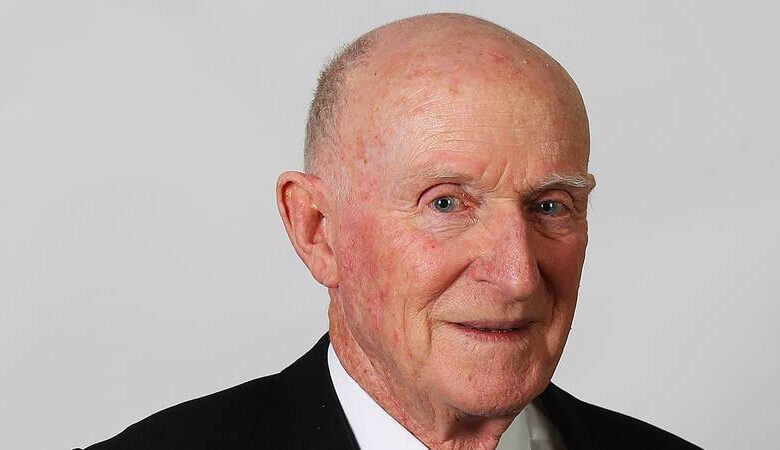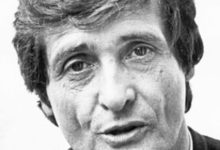How Did Sir Murray Halberg Die? NZ Olympic Champion Cause of Death Explained

Sir Murray Halberg, a pioneer in New Zealand athletics, passed away at age 89.
How Did Sir Murray Halberg Die?
Sir Murray Halberg, founder of the Halberg Foundation and former Olympic 5000m champion, has died. One of the most recognizable figures in New Zealand sports passed away at the age of 89. Halberg died on the evening of Wednesday, November 30, 2022.
No-one ever exemplified the Olympic spirit of triumphing over adversity better than Sir Murray Halberg.
Rest in Peace Sir Murray 🖤
7 July 1933 – 30 November 2022 pic.twitter.com/dEAtWSrCxz
— The New Zealand Team (@TheNZTeam) December 1, 2022
The New Zealand Team confirmed his passing stating that, “No-one ever exemplified the Olympic spirit of triumphing over adversity better than Sir Murray Halberg. Rest in Peace Sir Murray.”
Sir Murray Halberg Cause of Death
Murray Halberg, has passed away at the age 89. Sir Murray Halberg cause of death was natural and it is due to the natural causes. Halberg was one of the country’s top runners during a golden era in New Zealand athletics. He is survived by his wife, Lady Phyllis, and three children, Greta, Carl, and Stefan, and his two grandchildren.
Tributes flooded social media once the demise news of Sir Murray Halberg broke out.
A great life, lived to the max with others in mind. RIP Sir Murray Halberg, Olympic gold medalist, philanthropists, and all 'round great New Zealander.
— David Seymour (@dbseymour) December 1, 2022
Athletics New Zealand posted its condolences message on its Facebook page and it reads,
“Athletics NZ is deeply saddened to learn of the death of former Olympic 5000m champion and Halberg Foundation founder Sir Murray Halberg.”
David Seymour shared his condolences saying,
“A great life, lived to the max with others in mind. RIP Sir Murray Halberg, Olympic gold medalist, philanthropists, and all ’round great New Zealander.”
Who was Sir Murray Halberg?
Sir Murray Halberg was a world-class athlete who thrived for a decade on the global level. He is well known for winning the gold medal in the 5000-meter race at the 1960 Summer Olympics in Rome. Halberg also won gold in the three-mile event at the Commonwealth Games in 1958 and 1962. He was the first Kiwi to run a mile under four minutes.
Murray Halberg was born in Eketahuna, Wairarapa, in 1933, but lived the majority of his childhood in Auckland, where he attended Avondale College. Away from the track, he will be remembered for his outstanding work as the creator of the Halberg Foundation. It alters the lives of children with disabilities through athletics.
Athletic Career
Murray’s athletic career began after he suffered a terrible injury while playing rugby, leaving him with a withered left arm after months of recuperation. He was 17 at the time, and his condition inspired him to be a determined athlete while also sparking a life-long interest in the needs of disabled children.
Arthur Lydiard encouraged his talent, and he was the first outstanding runner to emerge from the Lydiard stable. After winning the New Zealand mile championship in 1954 and competing in the Vancouver Empire (Commonwealth) Games, he gained widespread attention. He had a small role in the Bannister-Landy 4-minute mile drama in that event. However, by 1958, he had developed into a remarkable runner.
In addition to winning the gold medal for the 3-mile run at the Cardiff Commonwealth Games and being voted Sportsman of the Year that year. He broke the four-minute barrier for the mile for the first time in New Zealanders. In 1961, he broke world records for the 2, 3, and mile relays. He earned another gold medal at the Commonwealth Games in 1962.
Halberg broke numerous records and claimed numerous victories over distances ranging from 800 to 10,000 metres, but his greatest achievement came when he won the 5000 metres in the 1960 Olympic Games in Rome. A golden double for New Zealand athletes, as Peter Snell of the Lydiard stable had just won the 800-meter race.
He competed in the Tokyo Olympics in 1964, but finished last in the 10,000 meters. While he was putting all of his efforts into his work with the Crippled Children Society, today is known as CCS, he briefly resorted to coaching.
The Sportsman of the Year annual dinner and awards, which he had revived, became the centerpiece of his Halberg Trust’s fundraising campaign for the Society after he established it in 1963. Despite his dislike of the term, the event became known as the Halberg Awards in 1992.


